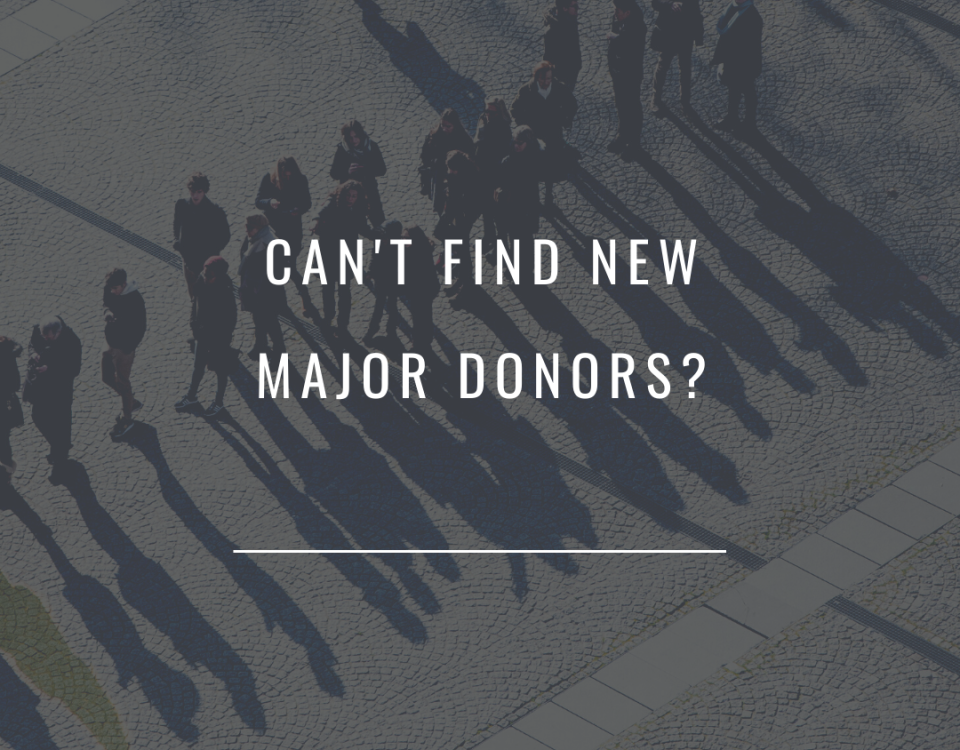
Social Change: What it Means for Nonprofits
November 17, 2021
Nonprofit Compensation: The Truth of Low Salaries
December 31, 2021One of the most significant issues nonprofit leaders need to understand is that billions are parked in donor-advised funds. Donor-advised funds, also known as DAFs, are a boon, but not for nonprofits. Instead, the money managers reap the rewards. And while I predict a nonprofit crash is on the horizon, the funds sitting in DAFs could go a very long way to helping people and causes now—not at some undetermined time in the future.
What’s the top reasons donors love donor-advised funds, and so many set them up? Well, that one’s easy. Donors get the tax deduction in the year they contribute to the donor-advised fund. However, they could leave the money and not give it to any charitable cause for years. In fact, many donors prefer to ‘build’ the fund’s assets, making money managers really happy. The idea is they’ll give a more significant gift sometime in the future, but that future might never come.
Not too long ago I was asked during a Q&A session for a webinar what happens if a donor dies and the funds haven’t gotten distributed? The answer is that the sponsoring organization (e.g., Fidelity, Schwab, Vanguard) keeps all the assets in the donor-advised fund. How’s that for making a social impact?
What’s a Donor-Advised Fund?
A donor-advised fund is a charitable investment and giving option that typically allows the donor to defer capital gains taxes. The donor starts by donating cash or stocks to a qualified 501(c)(3). Conveniently, money management companies, such as Fidelity Charitable, are ‘charities.’ But, of course, that’s in name only. Nevertheless, the amount donated is considered a charitable gift, and the donor claims a tax deduction for the donation in the current year.
The funds get invested by a third party (e.g., money managers, community trusts) and allow donors to recommend distributing their donations. Here’s another remove dirty little secret. The sponsoring organization has the right to decline if a policy decision allows this by the sponsoring organization. So, if a donor supports Planned Parenthood or the NRA, that recommendation might get denied. (Side note: In the future, I think it will affect more nonprofits supporting issues and causes that may be too divisive in the eyes of the sponsoring organization). Regardless, donors can include these gifts in their estate plans and receive substantial tax benefits when they die, and should.
Some of the Challenges With DAFs
Part of the challenge with donor-advised funds is that the idea of a 501(c)(3) is broad. Should we narrow the definition of 501(c)(3)’s to organizations that actually deliver programs? In other words, should organizations such as Schwab, Vanguard, or Fidelity, which don’t do anything charitable, be considered charities?
Further, in many instances, donors love the idea of DAFs because it’s a ‘charity’ that bears their name or the name they choose for their DAF. As we know, donors love to place their names on buildings and foundations. And, for as little as $50, any donor could have a named charitable organization through a donor-advised fund.
Inevitably, what happens to some donors that have a DAF ‘charity’ bearing their name, is that they trick themselves into believing that the DAF ’cause’ is worthy and doing good work—even if it’s just making more money. Why do they think so? Well, in their minds, they intend to donate, and when they do, they’ll make sure that it’s going to a worthy cause. Still, millions and millions sit parked in DAFs. Not sure how that’s helping anyone other than money managers.
In short, tax laws allow donors to give to so-called charities, such as DAFs that aren’t doing any charitable work per se but in some instances because of assets they can deploy certain funds in their control. Let’s face it, a donor-advised fund (although a designated 501(c) by the IRS) is really a vehicle to hold money and for financial managers to use to create more funds with assets under management by the sponsoring organization (e.g., Fidelity, Schwab, Vanguard).
Still, donors love donor-advised funds because they get a nice tax deduction—even if the funds get distributed to charitable causes years later, if ever.
How to Combat This Problem to Encourage More Giving
Don’t get me wrong, yes, donor-advised funds could help significantly. Recently, there’s been legislation to accelerate grants from DAFs. However, it’s still an uphill battle. In the meantime, there’s also a lot of money-making by money managers and not enough helping of the causes that could use that money now—not in 10 or 20 years. So, yes, donor-advised funds are holding back donations to nonprofits.
How can nonprofits help solve this? One way is to speak plainly to donors. In other words, nonprofit leaders need to be frank with them and explain why the intentions may be excellent but the execution flawed. If donors have no intention of donating soon, what good does the money do making more money? Further, donors have to understand that it’s essential they have a will that states how the donor-advised funds get dispursed were they to die unexpectedly.
Having these types of discussions is essential for fundraisers because money managers won’t have them with donors. Remember, for them, it’s in their interest if DAFs don’t have any succession or estate planning because they get to keep the money automatically. Is that really the intention of donors? The chances are that it isn’t.
A Few Final Words About Donor-Advised Funds
Donor-advised funds are a potent tool for many nonprofits. However, we need to keep some of the top reasons donors may not make donations to nonprofits.
- A lack of liquidity to donate.
- Difficulty donating online or as they want (e.g., cryptophilanthropy).
- Lack of awareness of the nonprofit’s mission and impact. Donors help underwrite what they help write.
- Lack of an individualized and responsive experience that encourages them to donate.
In other words, the best defense for having donors give their money to donor-advised funds is a good offense. Nonprofits can get donations from donors and even donor-advised funds by good old relationship-building. Talk to your donors about making direct contributions in ways that make sense to them. Share your successes and impact and provide personalized experiences for both the offline and online worlds.
Want to get essential information to improve your fundraising significantly? Get the High Impact Nonprofit Fundraising Playbook.
© 2021 High Impact Nonprofit Advisors. All Rights Reserved.


